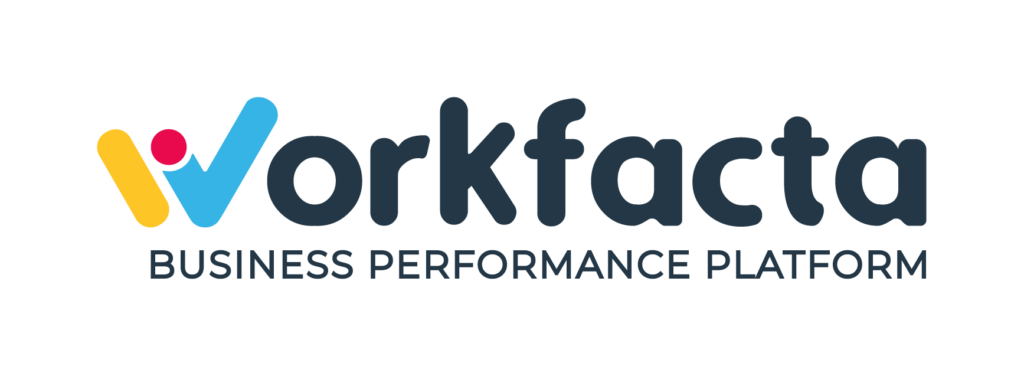
ENGAGEMENT | LEADRESHIP | TEAM ALIGNMENT | COMMUNICATION | ACCOUNTABILITY
7 Ways Executives Can Build Accountability in Their Team
7 Ways Executives Can Build Accountability in Their Team
 Workfacta Team
Workfacta Team
Published 08/03/2022
Did you know that a highly engaged workforce can outperform its competitors by 145% of total earnings per share?
If you want this magic in your organisation, then how do you build your workforce to accomplish this?
The short answer is that increasing accountability in your team improves employee engagement.
But that’s not the only reason to care about team alignment and trust. Building a high-performance team requires executives like you to increase accountability in the team because it has many other significant benefits.
Read on to see how to build a better team connection so you can skyrocket their performance.
. . .
1. Build a Culture of Accountability Starting From the Top
You can build accountability into every team member by ensuring leadership communicates accountability through their actions. If senior executives aren’t held accountable to the employees, then the employees won’t reflect accountability to the leadership.
One way you can do this is by holding effective meetings where leadership speaks about their goals and targets. This way, everyone in the company knows if they have achieved those objectives or not.
It’ll be easier for you to hold lower-level employees accountable for their tasks when they know every leader in the company is held accountable for their high-level strategies and benchmarks. Also, allow employees from all levels to hold leadership and everyone above or below them accountable for their actions.
Any employee should be allowed to challenge their supervisors if they are not meeting their targets and vice versa. This will build that culture of accountability through courageous action and not letting anyone get away with anything.
Build follow-ups into the culture of the organisation. There’s no point speaking about targets once and then forgetting about them. Hold regular team meetings with leadership, so everyone can see how the team is faring with their objectives.
Read our case study: How a global food company, Thomas Foods International, aligned their 12 executives
. . .
2. Accountability Means Building Trust and Finishing Projects on Time
When you build accountability as a cultural norm in your business, you’ll notice that trust between employees will rise greatly. Why is this?
It’s because your employees will know that everyone in their team and the organisation will be more open to following directions. When a colleague says that they are going to complete a particular project or task by a certain date, everyone in the organisation can work on the solid assumption that the work will be done by that time, if not earlier.
Thus, they will be able to work on their agenda items with that assurance in mind.
A lot of projects get delayed by weeks or months because there are bottlenecks in the organisation. This results in one or more employees not getting their work done on time.
You can see how this could quickly turn into a huge mess.
As an executive, you’ve probably dealt with a few of these bottlenecks. As a decision-maker, you might be unintentionally causing some of those bottlenecks yourself.
If you start building accountability into your work culture, you could say goodbye to many of these project delays.
. . .
3. Your Employees Will Feel Safer When Taking Innovative Risks
Another advantage of an accountability-focused culture is that employees tend to feel more comfortable with taking innovative and creative risks. They know that time is money and every moment they spend working on risky projects is a drain on the organisation.
But, they also know that these risks they take could result in an outcome that’s worth it. If an organisation doesn’t take risks, it could end up far behind its competitors and even face being pushed out of the business entirely.
You might have a culture in your organisation that encourages risk-taking. But you also need to create a psychologically safe environment for employees using an accountability culture. This will encourage them to take these risks, without any fear of being fired or being reprimanded.
As more employees take innovative risks, they will be more creative with their workload and be held accountable for those risks. Without overly strict consequences, the culture of risk-taking will spread throughout the organisation. This in turn will fuel more accountability in your employees and the spiral of positive upward growth will continue.
. . .
4. Constantly Communicate Accountability to Everyone
You can’t speak about accountability once or hold one training session. And then expect that it will become a part of your workplace culture. If it were that easy, every company in the world would have high-performance, accountable teams.
Consistent communication is crucial in this scenario. Senior executives will need to communicate accountability in their actions, of course. But they will also need to talk about accountability in every meeting, outing, and email.
Another thing that leaders can do in this regard is to speak honestly about the moments where they fell short of accomplishing a task. This kind of transparency can motivate others to address their shortcomings and create a culture where it’s okay to admit fault.
This builds accountability in immeasurable terms because people aren’t afraid to speak up when they are falling behind and need help with their tasks. Others in their team are then more motivated to help out their failing members so that the entire team can succeed as one.
It brings the Three Musketeers’ motto in mind, ‘One for all and all for one.’ That’s truly how an accountability-focused team behaves.
. . .
5. Choose One Person to Hold Accountable for Each Task
The common problem with accountability is that there isn’t usually one person who is accountable for each important task in the company. If there are too many cooks, they end up spoiling the broth.
Start with putting one person in charge of each task. That doesn’t mean that others can’t assist them in that task, but that they are the ones who are held accountable if the task parameters or goals aren’t met in time.
This way you can always have one point of contact and that greatly builds accountability. It also informs the other team members and the executive team exactly who’s working on what. Executives will know exactly which person they need to contact to check on the progress of a certain project.
It reduces time wasted searching for the right contact person or running around from one employee to another to ensure a task gets finished on time. This could be another one of those bottlenecks in your organisation that could be eliminated.
Watch our video on How Workfacta enables accountability
. . .
6. Always Give Feedback to Keep Engagement High
What’s one of the most important behaviours of high performers? They are open to receiving and giving feedback.
Are you are trying to build a culture where team connection and trust are high? One way you can do this is by giving constant feedback to your team members, preferably in private. Use both ‘day to day’ feedback and structured feedback sessions to inform your employees and team members about what they did well and what they need to improve upon.
Some phrasings you can use are:
- You handled that client really well…
- I think you could improve the report by…
- You do these things very well…
- I would like to see you develop in these areas…
In a culture of high accountability, feedback will be easy to give. Ideally, everyone is open to improving themselves and becoming a high performer. This also means that feedback should go both ways.
Not only are team leaders and senior executives allowed to give feedback to their team members, but the team members should be able to give feedback to their supervisors and leaders as well. They might see some room for improvement from their vantage point that others couldn’t. It would be a lost opportunity if they couldn’t share their opinions as well.
. . .
7. Have Measures in Place to Hold People Accountable
You can include accountability measures and goals in team performance plans. Place these goals into annual performance and evaluation reports for each employee. This way you can hold them accountable by putting measures in place.
Another way you can hold people accountable using technology is by using software like Workfacta. It can help you drive team alignment and responsibility. It also helps grow accountability using the management platform.
With this software, you can set clear expectations for each team member on what they are accountable for and what they aren’t.
For example, you can use this to delineate clearly, ‘You are responsible to ensure that the report has no spelling mistakes, blurred lines, and gets printed properly.’ This is a simplified example, but you get the idea.
Too many times, people feel occupied not by the tasks they are supposed to be working on, but on other people’s tasks. This is because they have no idea what their roles and responsibilities entail. This can create a widespread culture of confusion, blame, and mistrust in your organisation.
. . .
High-Performance Teams Begin With Accountability
Every leadership team wants their business to succeed. But instead of focusing on high-level tasks like setting sales targets and building a fabulous marketing plan, the primary responsibility of the executives is to build a culture of accountability in their organisation.
Easier said than done, yes. But once it’s done, it can catapult your organisation to new heights. Your employee engagement will increase as well.
Follow the tips laid out above and you’ll notice positive changes in your workforce. Use Workfacta, the business management platform for executives, and see the difference even faster. Contact us to book a demo or ask us any questions.


